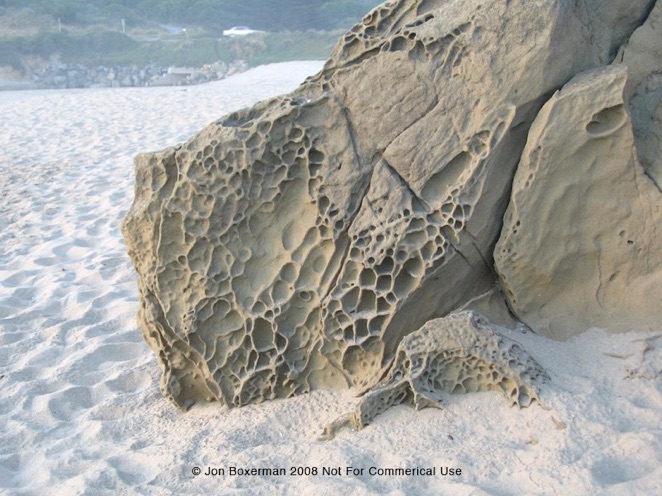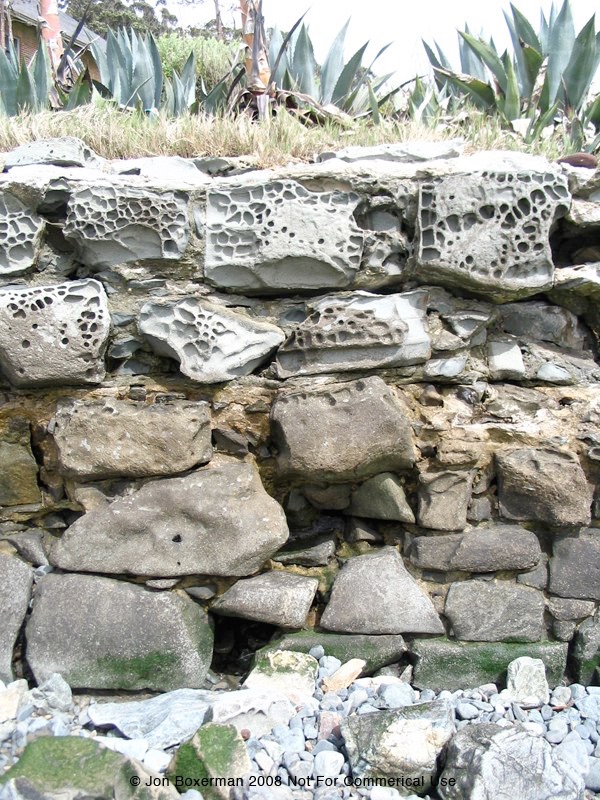Locations
What Climates Do Tafoni Prefer?
Tafoni is a weathering phenomenon facilitated by the presence of moisture, but will not readily form in areas saturated with water, such as along a shoreline below mean sea level. Tafoni prefer a balance between too little and too much moisture that may control initiation, size, shape and frequency per surface area.

Intertidal areas. In rocky intertidal areas, there is also a specific and well-recognized region, roughly 1-3 m above MSL, on steeply sloping surfaces, where there exists conditions ripe for tafoni to propagate. While the tides wax and wane, tafoni develop well within this elevation range (Bartrum, 1936; Martini, 1978; Kelletat, 1980; Gill, 1981; Mustoe; 1982; Pestrong, 1990; Mottershead, 1994). Near intertidal areas tafoni tend to be smaller than in drier regions, perhaps because coastal areas have shorter drying periods between wetting cycles, and consequently tafoni are not permitted ample time to grow.

Simulating growth with moisture and salt. In a computer simulation, the length of the drying period between episodes of saline rich moisture application mediates tafoni growth (Huinink, Pel, & Kopinga, 2004). This theory relating to the frequency of wetting and drying might help to explain why tafoni in arid desert regions are more voluminous than those found in more temperate climates.
Arid areas. A long drying period allows most saline-rich moisture to concentrate in the more sheltered parts of the cavity further perpetuating differential weathering feedbacks. On the other hand, when drying periods are short (e.g., tidally rather than seasonally) and the rock surface is not easily desiccated, salt would not concentrate in moister, more sheltered parts. Instead, for short drying periods saline-rich moisture would be distributed more uniformly across the rock’s surface rather than preferentially concentrated in sheltered parts, where salt and meteorological factors are able to differentially weather and enlarge pits.